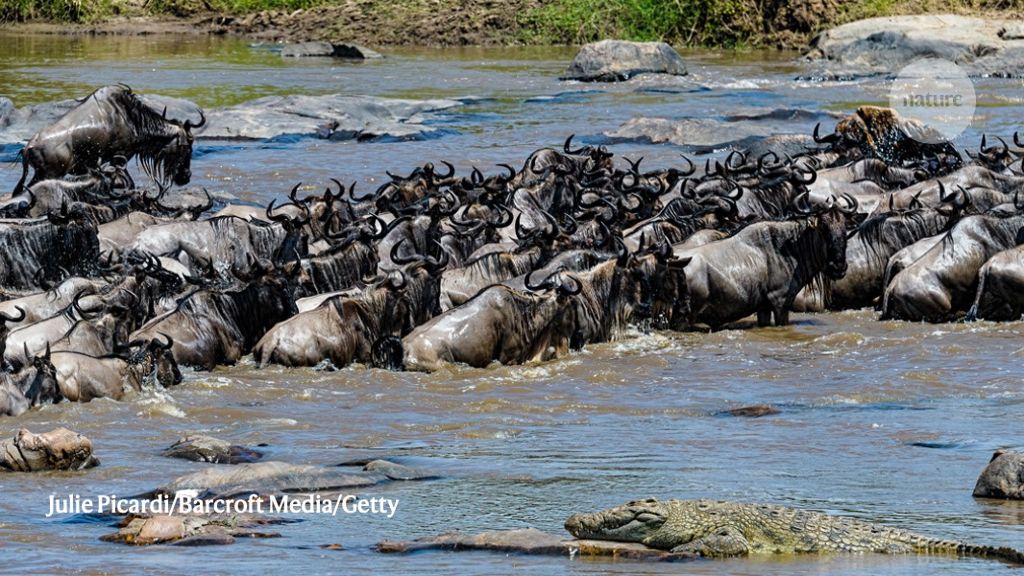A crocodile watches as wildebeest in Kenya cross the Mara River, whose waters are enriched by the skeletons of the animals that perish during the crossing. Credit: Julie Picardi/Barcroft Media/Getty
Biogeochemistry
The bones of long-dead wildebeest feed one of Earth’s most famous ecosystems.
Each year, in one of the biggest movements of animals on the planet, some 1.3 million of the Serengeti’s wildebeest (Connochaetes taurinus) migrate through the Mara River basin in Kenya. Thousands drown while crossing the river, and their carcasses pile up.
Amanda Subalusky at the University of Florida in Gainesville and her colleagues wanted to determine how much carbon, nitrogen and phosphorus leach from wildebeest bones into the river. They put fresh bones in mesh bags and staked them in the river, and compared measurements of bone nutrients from before and after 216 days in the water.
Nitrogen leached out into the environment quickly, whereas phosphorus was released much more slowly. The nutrients fed biofilms — collections of bacteria — that grew on the bones, and these biofilms, in turn, fed fish and other river creatures.
Bones play an under-studied part in the river’s web of life, the scientists say.

